Key Takeaways:
- Understand the evolving responsibilities of an HRBP in today’s organizations.
- Learn how HRBPs contribute to strategic planning and employee well-being
- Discover actionable insights for leveraging HRBP expertise in workforce management
The Strategic Significance Of HRBPs
Human Resource Business Partners (HRBPs) align human resources with an organization’s strategic goals. An HRBP stands as a vital bridge between HR and the business, playing a significant role in supporting company objectives through effective workforce management. These roles are more than administrative supports; they are strategic partners that ensure the HR practices resonate with the larger business goals. According to research, this dynamic role is essential for successfully implementing HR strategies, making HRBP irreplaceable in today’s fast-paced business environment.
Responsibilities Of An HRBP
The duties of an HRBP are extensive and varied. These professionals act as employees’ primary point of contact while influencing organizational development. Key responsibilities include talent management, conflict resolution, and ensuring compliance with employment laws. Their role demands a nuanced understanding of both HR practices and business objectives. As cited in SHRM, effective HRBPs consult on high-impact workforce activities such as leadership development, performance management, and organizational design, making them indispensable in driving organizational success.
Contributing To Strategic Planning
Beyond traditional HR functions, HRBPs are deeply involved in strategic planning. They provide insights into workforce trends, help forecast future HR needs, and develop strategies to attract and retain top talent. This involvement is crucial because it ensures that the human capital aligns perfectly with the company’s broader strategic goals. By linking HR practices with business outcomes, HRBPs help organizations stay competitive and adapt to market changes efficiently. They are instrumental in workforce planning, assisting organizations to anticipate future needs and proactively creating strategies to meet those needs.
Identifying Talent Gaps
HRBPs play a critical role in identifying talent gaps within the organization. Using data and analytics, they assess current workforce capabilities against the business’s strategic needs. This approach is about filling vacancies and understanding the skills and competencies required to drive the business forward. This proactive approach ensures the organization is prepared to meet future challenges by having the right talent.
Developing Strategic Initiatives
Once talent gaps are identified, HRBPs collaborate with leadership to develop strategic initiatives to close them. These initiatives can include training programs, recruitment drives, and restructuring efforts designed to align the workforce with business goals. By focusing on strategic initiatives, HRBPs ensure that the organization is not just reacting to immediate needs but also planning for long-term success.
Enhancing Employee Engagement
Employee engagement is a critical factor in organizational success. HRBPs play a crucial role in fostering a positive work environment that promotes high levels of engagement and productivity. This involves implementing initiatives that address employee concerns, recognizing achievements, and ensuring that the company culture supports employee satisfaction and retention. Engaged employees are more productive, more likely to stay with the company, and more likely to contribute to a positive work environment.
Listening To Employee Feedback
HRBPs excel at gathering and acting on employee feedback. They can implement changes that improve the overall work experience by actively listening to concerns and suggestions. This feedback loop is vital for maintaining a motivated and engaged workforce. Employees who feel heard and valued are likelier to be engaged and contribute to the organization’s success.
Recognizing Achievements
Recognition is a powerful tool for enhancing employee engagement. HRBPs ensure that achievements are celebrated and rewarded appropriately, fostering a culture of appreciation and motivation within the organization. Recognition can come in many forms, from formal awards to informal praise, and it is a critical component of a positive work environment.
Ensuring Compliance And Ethical Practices
Compliance with employment laws and ethical practices is non-negotiable in HR management. HRBPs ensure all HR policies and practices adhere to legal requirements and ethical standards. This protects the organization from potential legal issues and fosters a culture of integrity and trust within the company. Ensuring compliance involves staying up-to-date with the latest legal requirements and implementing policies and procedures that reflect those requirements.
Implementing Policy Changes
HRBPs often lead the implementation of policy changes, ensuring that new regulations are communicated effectively and integrated seamlessly into existing practices. This proactive approach prevents compliance issues and promotes a culture of continuous improvement. By staying ahead of regulatory changes and adapting quickly, HRBPs help their organizations avoid legal pitfalls.
Promoting Ethical Behavior
Ethical behavior is the backbone of a trustworthy organization. HRBPs promote ethical behavior by developing and enforcing codes of conduct, providing training on moral issues, and addressing unethical actions promptly and decisively. By fostering a culture of integrity, HRBPs help build a strong reputation for their organizations, which can be a significant competitive advantage.
Providing Leadership And Development Opportunities
Leadership development is vital for sustaining an organization’s pipeline of capable leaders. HRBPs identify leadership potential and create development programs tailored to nurturing future leaders. They work closely with existing leadership to align development programs with organizational goals, ensuring new leaders are well-prepared to take on greater responsibilities. Effective leadership development programs are critical for an organization’s long-term success.
Creating Development Programs
HRBPs design and implement leadership development programs that provide aspiring leaders with the skills and knowledge needed to succeed. These programs often include mentoring, coaching, and formal training sessions that align with the company’s strategic objectives. By creating comprehensive development programs, HRBPs help ensure the organization has a strong leadership pipeline.
Aligning With Organizational Goals
By aligning leadership development programs with organizational goals, HRBPs ensure new leaders are well-equipped to drive business success. This alignment supports a cohesive strategy that advances the company’s mission and vision. Leadership development programs are more likely to produce leaders ready to take on significant challenges when closely aligned with organizational goals.
Conclusion
The role of an HRBP is multifaceted and integral to the success of modern organizations. By bridging the gap between HR and the business, HRBPs ensure that HR practices are aligned with strategic goals, foster employee engagement, ensure compliance, and drive organizational change. Leveraging the expertise of HRBPs can lead to significant improvements in workforce management and overall organizational performance. In a rapidly changing business environment, the strategic insights and proactive measures of HRBPs are more valuable than ever.

